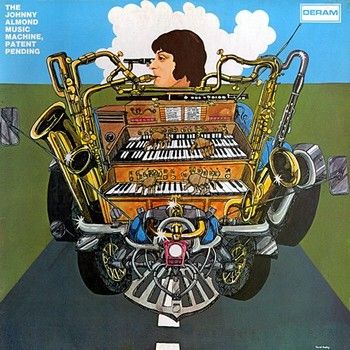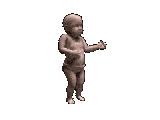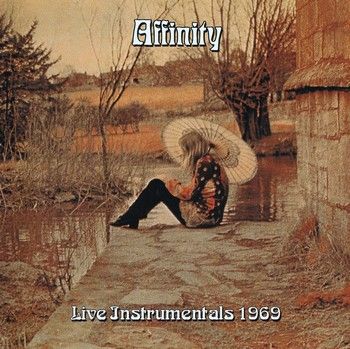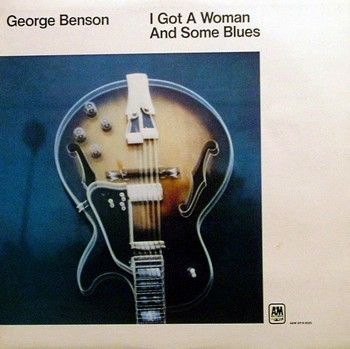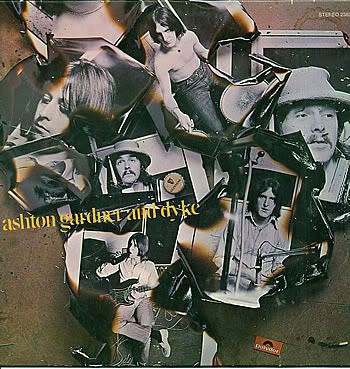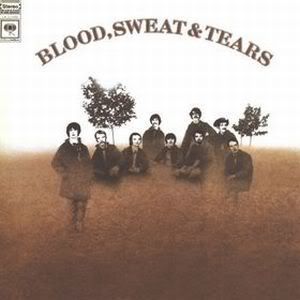
Blood Sweat & Tears - Blood Sweat & Tears - 1969 - Columbia
The self titled Blood, Sweat & Tears, their second album, hit No. 1 stateside, sold three million copies, and won the Grammy for Album of the Year. Three singles went to the top of the charts: Clayton-Thomas’s “Spinning Wheel,” “And When I Die,” written by band friend Laura Nyro, and the album’s first 45, “You’ve Made Me So Very Happy,” a song written and recorded by Motown vocalist Brenda Holloway and reconceived by Kooper before he departed. This is probably the groups best album, as it set an artistic and commercial standard that the band was unable to equal again. An amazing mix of rock, jazz, folk, blues, and classical pieces. A brilliant album
TRACKS
1. Variations On A Theme By Erik Satie (2:30)
(1st and 2nd Movements, Adapted from "Trois Gymnopedies")
2. Smiling Phases (5:10)
3. Sometimes In Winter (3:08)
4. More and More (3:04)
5. And When I Die (4:05)
6. God Bless The Child (5:56)
7. Spinning Wheel (4:07)
8. You've Made Me So Very Happy (4:19)
9. Blues-Part II (11:45)
10. Variations On A Theme By Erik Satie (1:37)
(1st Movement, Adapted from "Trois Gymnopedies")
MUSICIANS ON THIS ALBUM
-David Clayton-Thomas/ Vocals (Except "Sometimes in Winter")
-Steve Katz/ Guitar, Hamonica, Vocals (Lead on "Sometimes in Winter")
-Bobby Colomby/ Drums, Percussion, Vocals
-Jim Fielder/ Bass
-Fred Lipsius/ Alto Saxaphone, Piano
-Lew Soloff/ Trumpet, Fluegelhorn
-Chuck Winfield/ Trumpet, Fluegelhorn
-Jerry Hyman/ Trombone
-Dick Halligan/ Organ, Piano, Flute, Trombone, Vocals
BS&T Soul Chorus:
- Dick Halligan, Bobby Colomby
-Alan Rubin/ Trumpet on "Spinning Wheel"
-Lucy Angle/ Footsteps
GROUP MEMBERS
Al Kooper, Joe Henderson, Steve Khan, Fred Lipsius, Tom "Bones" Malone, Ron McClure, Lew Soloff, Mike Stern, Larry Willis, Randy Bernsen, David Clayton-Thomas, Jerry Lacroix, Don Alias, Bobby Doyle, Dave Bargeron, Randy Brecker, Forrest Buchtel, Bruce Cassidy, Bobby Colomby, Vern Dorge, Bob Economou, Jim Fielder, Joe Giorgianni, Dick Halligan, Jerry Hyman, Steve Katz, Tony Klatka, Roy McCurdy, Lou Marini, David Piltch, Earl Seymour, Neil Stubenhaus, Bill Tillman, Danny Trifan, George Wadenius, Jerry Weiss, Chuck Winfield, Chris Albert, Jerry Fisher
REVIEW
The difference between Blood, Sweat & Tears and the group's preceding long-player, Child Is Father to the Man, is the difference between a monumental seller and a record that was "merely" a huge critical success. Arguably, the Blood, Sweat & Tears that made this self-titled second album -- consisting of five of the eight original members and four newcomers, including singer David Clayton-Thomas -- was really a different group from the one that made Child Is Father to the Man, which was done largely under the direction of singer/songwriter/keyboard player/arranger Al Kooper. They had certain similarities to the original: the musical mixture of classical, jazz, and rock elements was still apparent, and the interplay between the horns and the keyboards was still occurring, even if those instruments were being played by different people. Kooper was even still present as an arranger on two tracks, notably the initial hit "You've Made Me So Very Happy." But the second BS&T, under the aegis of producer James William Guercio, was a less adventurous unit, and, as fronted by Clayton-Thomas, a far more commercial one. Not only did the album contain three songs that neared the top of the charts as singles -- "Happy," "Spinning Wheel," and "And When I Die" -- but the whole album, including an arrangement of "God Bless the Child" and the radical rewrite of Traffic's "Smiling Phases," was wonderfully accessible. It was a repertoire to build a career on, and Blood, Sweat & Tears did exactly that, although they never came close to equaling this album. © William Ruhlmann & Bruce Eder, All Music Guide
BIO
Blood, Sweat & Tears was/is a Jazz-Rock band formed in New York in 1967, and one of the early examples of the genre that would be known as "Brass Rock" and sharing their hierarchy of the genre with CHICAGO TRANSIT AUTHORITY (later CHICAGO), both being prime examples along with their UK competitor IF.
The original incarnation of the band was lead by AL KOOPER (for just one album), JIM FIELDER (of Zappa's Mothers Of Invention fame), FRED LIPSIUS, JERRY WEISS, STEVE KATZ, DICK HALLIGAN, BOBBY COLOMBY, COREY GARRISON and RANDY BRECKER. Both AL KOOPER and STEVE KATZ had already worked together on The Blues Project, and Al Kooper got out of the band due to his desire to add horns and the frustration caused by the denial fromthe rest of his former band mates, only taking Steve with him.
They started by playing gigs at the Cafe Au Go Go, all of which were well received by the audience due to the innovating sound of brass with rock, jazz and psychedelia. The band at that moment was just integrated by Kooper, Katz, Colomby and Fielder; they were playing some of Al's first songs. Then the nucleus remained after thoughts of going separate ways, while bringing to the personnel trumpeters Randy Brecker and Jerry Weiss, saxophonist Fred Lipsius and trombonist Dick Halligan. The difference between BS & T and many R&B bands/artists lied in the use of the brass arrangements: whilst in R&B the brass simply served as decoration, BS & T used the brass with complex arrangements and solo spots.
They recorded their debut album by 1968 called "Child Is Father To The Man", which was proven a success. However, Colomby and Katz disliked Al Kooper's vocal style and they asked him to concentrate more on the organ. Kooper, disliking the way they were trying to dominate the band, quitted to become a record producer. Randy Brecker also departed to work with Horace Silver along with his brother Michael, and eventually they both co-formed the band Dreams. Kooper's last gig with BS & T was at the Garrick Theatre, in New York.
Colomby and Katz carried on with the support of Columbia Records. Jerry Weiss also left sometime later to form the band Ambergris. JERRY HYMAN, CHUCK WINFIELD and LOU SOLOFF were then called to the lineup to fill the blanks, and Dick Halligan was placed on organ. After some tryouts with Stephen Stills and Laura Nyro, Canadian DAVID CLAYTON-THOMAS was suggested by folk singer Judy Collins to her friends Colomby and Katz, and after seeing him perform they decided to recruit him. The new 9-piece recorded the self-title album "Blood, Sweat & Tears", produced by James William Guercio, and consisted mostly of covers like Brenda Holloways' "You've Made Me So Very Happy" and Laura Nyro's "And When I Die"; but without losing some progressive flavour with their own "Blues-Part II" and the variations of the Eric Satie piece "Trois Gymnopédies". Still, the album was a big commercial success and won a grammy as "Album Of The Year" and "Best Performance By a Male Vocalist". They also played at various Jazz and Rock festivals and performed at the first day of the Woodstock festival (it is interesting to know that their set couldn't be filmed entirely because of contractual reasons).
The group was asked by the U.S State Department to do a tour on East Europe, by means of giving a bit of American flavour to the youth in that part of the world. The results were disastrous, and the audience at the Romanian concert were repressed by police officers. The benefit proposed to the band was to grant Clayton-Thomas a green card.
The second album was recorded and released on June of 1970, called "Blood, Sweat and Tears 3"; as it was a very anticipated release, the album rose to the top of the U.S charts very quickly. Again, the album would be a collection of covers, like Carole King's "Hi-De-Ho", Steve Winwood's "40,000 Headmen" (the same Winwood of Traffic's fame) and Joe Cocker's "Somethin' Coming On". It received mixed reviews however, presumably influenced by the Eastern Europe incident. On November of that year they also had the chance to play with a symphonic ensemble in New Orleans.
In January 1971 they began recording they fourth album in San Francisco, called "Blood, Sweat and Tears 4". For the album Jerry Hyman was replaced by DAVE GARBERON and DON HECKMAN was called to co-produce. This time they had more compositions of their own, including Halligan/Clayton-Thomas' "Redemption" (with guest MICHAEL SMITH on congas) Halligan's "Lisa, Listen To Me" and Clayton-Thomas' "Go Down Gamblin'"; they also recorded a version of Al Kooper's "John The Baptist (Holy John)". They also became the first rock band to play in Las Vegas, at the expense of some of their fans disdain (their rockier fans).
The last concert with David and Fred Lipsius was on Dec. 27, 1971 in Anaheim, California. Due to discrepancies in the members' musical ambitions, they split up. Sax legend JOE HENDERSON (who didn't stay long enough to participate in studio sessions) was asked to fill Fred Lipsius' spot and after a while Joe was replaced by LOU MARINI. Dick Halligan was replaced by LARRY WILLIS and GEORG WADENIUS filled the guitar spot. Their album "New Blood" marked a change in sound, venturing on more jazzy grounds; an example of this is the cover of Herbie Hancock's "Maiden Voyage". The single "So Long Dixie" was also released and reached #44 in the charts. Guitarist STEFAN GROSSMAN (who played with Steve Katz on Even Dozen Jug Band) featured as guest in the european part of the New Blood tour
The next album, "No Sweat" (1973), was recorded without Dick Halligan (who was replaced by LARRY WILLIS); Steve Katz retired from active playing at the same time to work as a producer. Chuck Winfield also left, and was replaced by Tom Malone. This resulted in the album being recorded with a nine-piece band. Two track off the album were released as singles: "Roller Coaster" and "Save The Ship". After some touring there were even more personnel changes; this turn is for Jim Fielder, Lew Soloff, Lou Marin and Tom Malone (RON MCCLURE, BILL TILLMAN, TONY KLATKA and JERRY LACROIX came in); Jerry LaCroix, former member of the Edgar Winter Group, also sings, but Jerry Fisher still has the lead vocal position.
In July 1974 "Mirror Image" was released, the third album from the post-Clayton-Thomas period. "Tell Me That I'm Wrong" was released as a single. Jerry LaCroix did not feel comfortable within the band, and the style was admittedly not of his likings; so his vocal duties were filled by one LUTHER KENT, who sang together with JERRY FISHER. Bobby Colomby and band manager Fred Heller were also planning the return of Clayton-Thomas to the band. Eventually Luther Kent, Jerry Fisher and Clayton-Thomas sang together on a show. After all that, Jerry and Luther left.
With Clayton-Thomas' return, the band produced two more albums for Columbia Records: "New City" and "More Than Ever". Then the last original member of the band, Bobby Colomby, left the band in 1976; due to this album's lack of commercial success, Columbia drops the band and later it's signed for ABC Records. In November they record "Brand New Day", and that was the Swan Song for that version of BS&T, after saxophonist GREGORY HERBERT (who joined them on the 1978 Europe tour) died of a cocaine overdose.
David Clayton-Thomas formed a band in 1980 consisting of Canadian musicians. It was initially called "Canada", but after management pressures he changed the name to Blood, Sweat & Tears to have a worldwide recognition.They signed to Avenue Records subsidiary label LAX [MCA Records], and with producer and arranger JERRY GOLDSTEIN they recorded the album Nuclear Blues, with a more jazz-funk sound. The band disbanded again after an Australian tour.
David decided to pursue his solo career again, touring with a new band. There were complications as in some shows his band was booked as "Blood, Sweat & Tears" and David Clayton didn't have legal rights for the name. So he negotiated with Bobby Colomby for the license of the band's name. For the next years he would be booked as "Blood, Sweat & Tears (featuring David Clayton-Thomas)". He was allowed to tour with that name, but Colomby said it wouldn't apply for recordings.
In 1994 Al Kooper got together with members of the original band and played gigs under the name "Child Is Father To The Man" (since the rights to the original name were reserved to Colomby). The shows were released on a double CD called "Soul Of A Man: Al Kooper Live" and included the performances of "Your Days Are Numbered" and "I Can't Quit Her". That same year, David Clayton recorded an album with his Blood, Sweat & Tears horn section at that time and Hungarian drummer and compose Leslie Mandoki, called "People" (which also featured figures like IAN ANDERSON, AL DI MEOLA and MICHAEL BRECKER). Three years later they recorded and released "People In Room No. 8" and in 2002 David recorded tracks for the third Mandoki album called "Soulmates".
In 2004 David-Clayton announced that he would again pursue a solo career (without the Blood, Sweat & Tears name); that the band is no more and that he wishes to take a break from the road to engage in creative projects. © Jesus ‘Chus’ Brea © Prog Archives, All rights reserved
